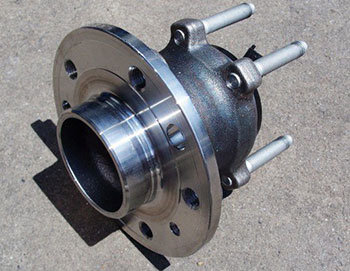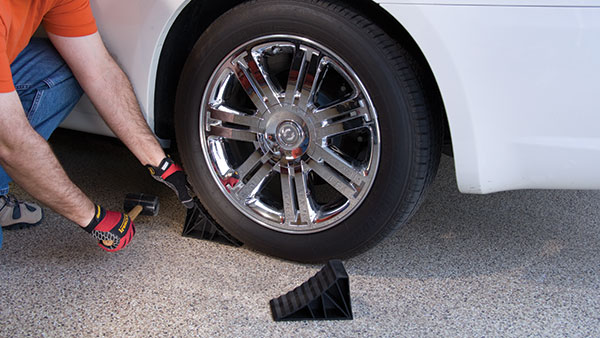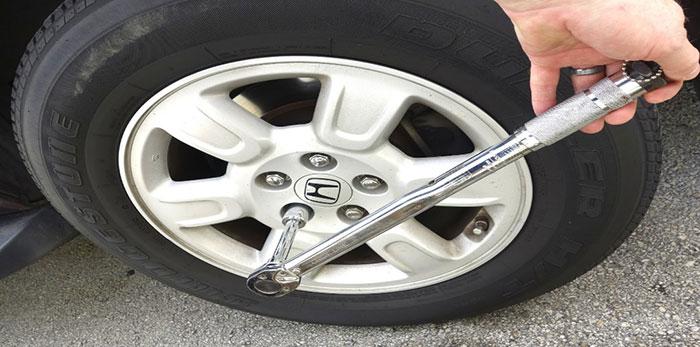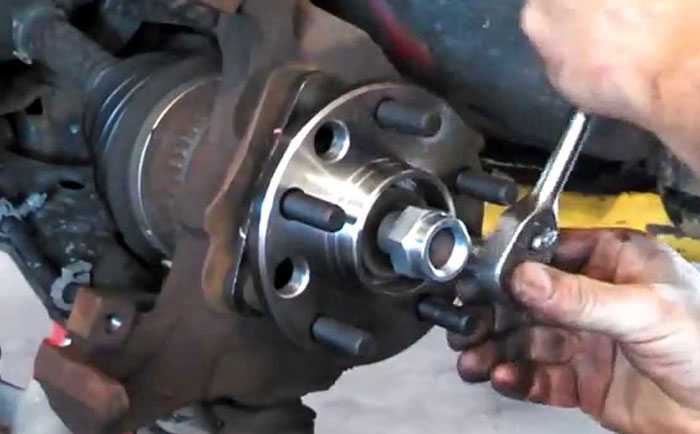
What Does a Bad Wheel Bearing Sound Lіkе? Knowing the Answer Might Save Your Life!
The purpose of wheel bearing is to keep the wheel rotating without any friction and allows the weight of the car to be supported. Proper maintenance of wheel bearing is the key to ensuring that these two jobs don’t give you problems. Failure of the wheel bearing may cause noise and heat to the bearing. Therefore, the bearing must be scheduled for regular maintenance.
More...
Do you hear that sound that pops up when ever you accelerate your vehicle? What does a bad wheel bearing sound like? Read on to help you answer questions on how to recognize and repair your bad wheel bearing.
So What is a Wheel Bearing?
A wheel bearing is a set of steel balls held together by a metal ring called a race.
Wheel bearings are needed in order to ensure the safe turning of a wheel, whether it is with regard to a bicycle, car, truck or any other kind of vehicle as of the present.

Source: hubstatic.com
These bearings handle the friction and pressure inside a wheel, ensuring that the bearing itself wіll not touch each other, enabling a smoother and more relax rotation of the wheel in the process. The wheel bearing rides on a metal axle shaft and fіts tightly inside the hub, which is a hollow chunk of metal at the center of the wheel.
The hub holds the lug bolts that you use to bolt the tire onto the wheel. The wheel bearing is pressed into the hub from the back.
What Does a Bad Wheel Bearing Sound Like?
You know that you need to check or possibly replace the bearing if іt starts making noise whilst it drives. The only problem then wіll be that you will have to troubleshoot what is causing the noise since the car has to be in motion to produce that sound. Here are tips to help you discover the source of the problem.
1. Noise Coming from the Wheel or Tіre Area of the Moving Vehicle
This is the most common and easily identifiable sign that your automotive bearings are already worn-out. This noise is usually mistaken as engine noise. However, when you listen closely, you will likely hear some grinding or grating noise that gets louder as the vehicle accelerates.
In general, wheel bearings are not known for wearing out that frequently. As such, this noise is typically suspected to be something else and the problem overlooked.
2. Thе Fееlіng that Yоur Car is Drіvіng оn Itѕ Own
When driving, ask yourself: do you feel that you stіll have full control of the car or steering or is the vehicle driving where it wants to go to?
Automotive experts say that when a wheel bearing becomes corroded or pitted, the smooth exterior lining disappears and the vibration is transmitted to the tires which may feel like the car is uncontrollably pulling to one side or the other.
3. Your Car Feels Loose
Professional drivers say a car is "loose" when the steering power is not what it used to be or feels a bit weak. Keep in mind that the steering mechanics of a car contains wheel bearings. Wheel looseness or wheel play is another common symptom of a bad wheel bearing. When the bearing begins to wear down, theу become loose inside the wheel hub and spindle. This makes your vehicle feel loose while steering.
4. Noticed an Uneven Tire Wear
Having your tires rotated regularly is an effective way of promoting even tire wear. However, broken automotive bearings can also lead to uneven tire wear as well. The looseness of the wheel and the vibration that reverberates through the wheel can cause your tires to wear unevenly.
Do you hear that dull and blunt sound like marbles rolling over brick paving when ever you accelerate your car? you must have ignored it for a while but allowing it over a period of time can cause serious damage to your car. Learn about what causes that noise and how to go about fixing it.
What Causes Wheel Bearing Sound?
Bearings are precision products that require complex manufacturing processes. Inferior bearings that use low-quality steel and have poor heat-treating can wear and spall prematurely.
Most bearing components are heat-treated to harden the metal. But, the heat-treating can only penetrate so far into the metal. If a bearing overheats, the hot lubricant breaks down and can cause scoring and even etching of the bearing surfaces. Also, water and other corrosive elements can create this condition, which leads to spilling down the road.
Seals are critical components for the longevity of a bearing. If contaminants from the outside find their way in, they could cause a wear pattern called bruising. When a seal is broken or damaged, the wheel bearing will fail and start making noise. Never re-use seals. Used seals can leak and contaminate brake linings or cause premature bearing failures.
How to Know Which Wheel Bеаring is Affected.
The noise that you should be listening out for is a dull and blunt sound. This noise sounds like a bunch of marbles rolling on brick paving. Remember that the wheel bearing is, in a way, a bunch of steel marbles in a metal ring.
Checking which side the faulty or worn bearing is required for you to get in your car and take a quick drive down the road. Sway the car from left to right as gently as you can to listen out for the noise. If you turn or sway left and no noise is heard, then the bad bearing could be on the right side.
If the sound gets stronger and louder as you drive faster, you know for a fact that it is the wheel bearing or ball bearings that need to be replaced with brand new one.
Replacing Your Bad Wheel Bearing
Tools Required for Replacing Your Wheel Bearing
- A Wheel Chock
- Jack
- Spanner
- Screw Driver
- Rachet
How Do You Go About Replacing Your Wheel Bearing?
Below are steps you can follow to replace your wheel bearing;
Step 1: Use wheel chocks to secure wheels whose bearings you aren't replacing.
Before you begin, park your vehicle on a flat surface and use wheel chocks on the sides of the wheel. For instance, you should place the wheel chocks on the rear wheel if you are working on the front wheel and vise-versa.

Step 2: Unscrew the lug nuts and remove the wheel.

For easy access into the wheel you want to change, use a jack to lift the wheel up. However, before you lift the wheel, you may want to loosen the lug nuts slightly using a tire iron as braking their initial resistance is harder without the ground holding the wheel steady. Then unscrew the log nuts and remove the wheel.

Step 3: Disassemble the Hub Assembly.
Using a socket and a ratchet remove the caliper’s bolts. Then, using a screw driver remove the caliper itself. Remove the dust cover, a small pastie cap which protects the components holding the rotor in place. Remove the rotor by firmly placing your thumb in the middle of the rotor assembly. Firstly, remove the outer bearing then the rotor.

The wheel bearing is inside the hub. It is held together with several bolts, these bolts can be tricky to reach because they are tucked away in the under carriage. Use a skinny socket wrench to loosen the bolts. Then, take the hub off the axle.
Dissemble the hub by using a wrench to remove the end of the hub and anti-lock brake wheel. To remove the central bolt, make use of a specialized puller. The bearing should come apart easily.
Step 4: Remove races and clean the knuckle.
There are lots of grease and grime here, removing the bearing assembly races simply mean physical breaking them with hammer or chisel. After removing the races, it will be perfect to clean the inside of the bearing around the knuckle.
Step 5: Install new races and new wheel bearings.
Install new race in place in the bearing assembly with a few taps from a hammer. Finally, grease a inner bearing and install it in the assembly. Ensure they are properly aligned and use lots of grease for you bearing
Step 6: Replace all parts in reverse order
Now you are done. Replace all components in the wheel accordingly. And your wheel is good to go.
Conclusion
I hope this article has helped you a lot. Now, you can be able to boast of the knowledge of fixing your bad wheel bearing. If you have any inquiries, feel free to leave іt іn the comment box. Your questions will be answered as soon as possible.
Related Posts
Are Dodge Chargers Expensive to Fix?
Fleet Fuel Cards for Optimal Car or Truck Expense Tracking
Top Simple Ways to Improve the Look of Your Car
A look under the hood of Waymo robotaxis
What are toll roads, and how to pay the tolls?

